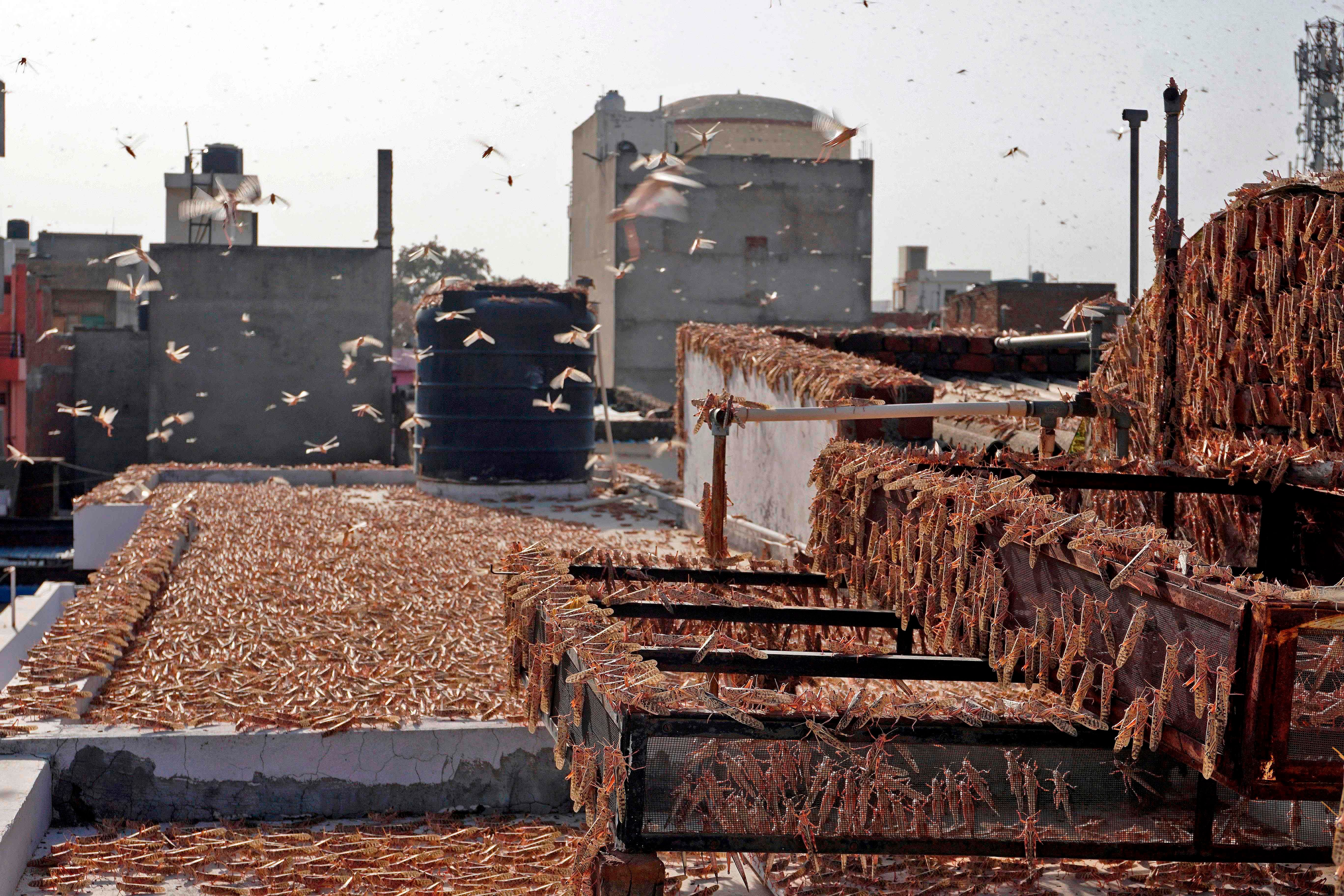
The government has stepped up efforts to control spread of swarms of locust, a crop damaging migratory pests, in Rajasthan, Gujarat, Punjab and Madhya Pradesh, and plans to soon deploy drones for spraying pesticides, the Union Agriculture Ministry said on Wednesday.
About 21 districts in Rajasthan, 18 districts in Madhya Pradesh, 2 districts in Gujarat and 1 district in Punjab have undertaken locust control measures till now, the ministry said in a statement.
It has been controlled in 47,308 hectare areas so far in Rajasthan, Gujarat, Punjab and Madhya Pradesh, it said.
The government has placed an order for buying 60 spraying machines from UK-based company Micron, and two firms have been finalised for supply of drones for aerial spraying of insecticides for effective control over tall trees and inaccessible areas, it added.
"Usually, the locust swarms enter the scheduled desert area of India through Pakistan for summer breeding in the month of June/July with the advent of monsoon.
"This year, however, incursions of locust hoppers and pink swarms have been reported much earlier because of presence of residual population of locust in Pakistan which they couldn't control last season," the statement said.
Incursions of locust hoppers have been reported since April 11 and that of pink immature adults since April 30 in bordering districts of Rajasthan and Punjab, which are being controlled, it said.
Pink immature adults fly high and cover long distances during day hours along with the westerly winds coming from the Pakistan side. Most of these pink immature adults settle on trees during night, and mostly fly during the day, it explained.
Stating that control operations are in full swing currently, the Ministry said so far locusts have been controlled in 47,308 hectare area in total 303 places in Rajasthan, Punjab, Gujarat and Madhya Pradesh by Locust Control Officers in coordination with district administration and state agriculture department.
However, there are active swarms of "immature locust" in 8 districts in Rajasthan (Barmer, Jodhpur, Nagaur, Bikaner, Ganganagar, Hanumangarh, Sikar and Jaipur) and 7 districts in Madhya Pradesh (Satna, Gwalior, Seedhi, Rajgarh, Baitul, Devas, Agar Malwa), it said.
"The immature locust is very active and their mobility makes it difficult to control the swarm at one location and it takes 4 to 5 days of control at different locations to control a particular locust swarm," it said, adding that control operations are being undertaken in morning hours on a daily basis.
At present, 89 fire brigades for pesticide spray, 120 survey vehicles, 47 control vehicles with spray equipment and 810 tractor mounted sprayers have been deployed for effective locust control, as per requirement on different days.
For effective control of locusts beyond scheduled desert areas, temporary control camps have been established in Ajmer, Chittorgarh, Dausa in Rajasthan; Mandsaur, Ujjain, Shivpuri in Madhya Pradesh and Jhansi in Uttar Pradesh, the ministry added.
The ministry said it has received permission from Civil Aviation Ministry for use of drones for locust control.
"Two firms have been finalized through tender for use of drones for spray of pesticides for locust control," it added.
Currently, the Locust Control Offices have 21 Micronair and 26 Ulvamast spray machines which are being utilized for locust control.
Meanwhile, supply order for procurement of additional 55 vehicles has been placed to strengthen the control potential. Adequate stock pesticide Malathion has been maintained at Locust Control Organizations.
Advisories have been issued to Rajasthan, Gujarat, Haryana and Punjab regarding the locust attack and necessary measures to be taken for effective control and pesticides that are to be used for effective locust control in cropped areas.
Sharing the Food and Agriculture Organization's (FAO) update on locust swarms issued on May 21, the ministry said the UN body has said that the current situation remains extremely alarming in East Africa where it is an unprecedented threat to food security and livelihoods.
New swarms will migrate to the summer breeding areas along both sides of the Indo-Pakistan border as well as to Sudan and West Africa.
As vegetation dries out, more groups and swarms will form and move from these areas to the summer breeding areas along both sides of the Indo-Pakistan border, FAO had said.
Good rains are predicted during the first half of June along the Indo-Pakistan border that would allow egg-laying to occur, it added.
During 2019-20, India witnessed a massive locust attack which was successfully controlled.
Starting from May 21, 2019 till February 17, 2020, a total of 4,03,488 hectare area was treated and locust swarms were controlled, the statement said.